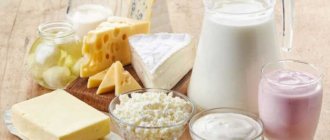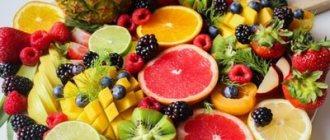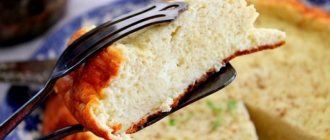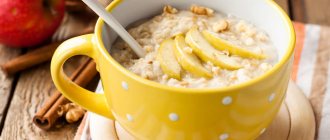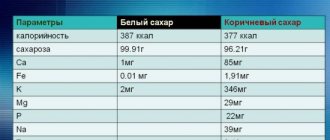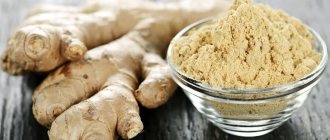Excessive consumption of sugar can lead to poor health. When adhering to a balanced diet, it is important not to overindulge in sweets, but to limit your diet by excluding some foods that contain large quantities of sugar. Excess glucose and fructose in food can cause chronic fatigue.
Excessive sugar consumption causes hormonal imbalances, decreased immunity, and heart disease. Most often, diabetes mellitus and hypertension develop, and blood cholesterol increases. A person experiences hyperactivity simultaneously with various syndromes, such as irritable bowel syndrome and attention deficit disorder.
Diet plan
A sugar-free diet involves avoiding only foods containing sugar.
It can be used not only for weight loss, but also for health improvement. There is no need to create a calorie deficit. It is recommended to prepare before starting the diet. To do this, over the course of 2-3 weeks, you should gradually reduce the amount of sweets and other foods containing harmful substances in your diet.
A savory diet also requires proper completion. When the 3 weeks are over, you cannot immediately include a large number of sweets on the menu. Eating desserts is allowed, but it is better not to introduce a lot of them at once, and control your sugar intake.
Contraindications for a diet without carbohydrates
A diet low in carbohydrates, or even without these important nutrients, can cause harm to the body later on. As mentioned above, carbohydrates are used by the body for energy. Without them, the body is forced to use other energy sources like fats and proteins.
A diet without carbohydrates allows you to quickly get rid of excess fat, which is converted into energy. But eventually the proteins become damaged, leading to damage to our muscle structure. Additionally, such a diet can cause ketosis, a condition in which many of our organs are at risk of being damaged. Having said that, if you want to follow a no-carb diet to lose weight, it is recommended to introduce high-protein and high-fat foods into your diet and return to your normal diet after 2 weeks.
Products without refined sugar
Refining is the removal of foreign impurities, usually during a certain processing process. Such products are less healthy and are not fully absorbed, because the human digestive system is designed for unrefined natural food.
It happens that in the process of cleansing one gets rid of not only the unnecessary, but also the useful. During refining, for example, the components inherent in the raw material are removed from sugar, such as malt, which contains pectins.
Refined sugar dissolves more easily and looks more attractive than yellow sugar with a high level of malt, which dissolves less well and forms foam. But unattractive sand brings more health benefits. In addition, the technology for processing and bleaching sugar beets or cane involves the use of various chemicals and filters that leave their “traces” in the snow-white sand.
Refined carbohydrates are the main substances for energy nutrition of the body. But most of them are deposited in fat reserves, which provokes obesity, metabolic disorders, and diabetes. Refined sugars cause a lot of harm:
- provoke excess weight;
- stimulate false hunger, which is fraught with overeating and the same consequences;
- promote skin aging;
- cause addiction;
- lead to vitamin B deficiency;
- deplete energy depot;
- weaken the heart muscle;
- wash away calcium;
- reduce the level of immunity.
Refined products can be easily replaced with healthy analogues, for example:
- premium flour - oatmeal, corn, buckwheat, rice, pea, lentil, whole grain flour;
- sugar – honey, stevia, maple syrup, dried fruits;
- vegetable oil - olive, melted butter;
- polished rice - unrefined rice grains.
The main danger is that refined sugar is found in almost all packaged foods and drinks, fast food, and white flour products. It is much healthier to choose sugar-free foods.
Unfortunately, yellow unrefined sugar is much more expensive, and there is little choice in stores, and there is a risk of counterfeiting and adulteration. Sparsely and with a choice of products without refined sugar. To eliminate the sweet component from your diet, you need to eat at home and only freshly prepared food.
Products containing sugar table. Gout and diabetes
From the author: Hello dear readers!!! I deeply apologize for the delay in publishing articles; there was a forced break in my work. I took my two-month-old son to the Republican Neurosurgical Center for surgery. The operation was successful, my baby is healthy and happy. I'm starting to work on the site...
Once called the “disease of kings,” gout was a problem primarily for wealthy people and royal families who lounged around drinking wine and eating fatty foods. But today, approximately 68% of the Russian adult population is either overweight or obese. As a result, gout and type 2 diabetes—two diseases that can result from unhealthy lifestyle choices—are on the rise.
Gout is a joint disease caused by an excess build-up of uric acid. This causes sudden, extreme attacks of pain, swelling and redness. Gouty arthritis most often affects the big toe, but can also affect the feet, ankles, knees, hands and wrists.
Type 2 diabetes, a disease characterized by high blood sugar, can also result from excessive eating and lack of exercise.
Gout and type 2 diabetes often coexist in people with common physical characteristics and conditions, the most prominent being obesity.
Many risk factors for type 2 diabetes are also for gout. By changing these risk factors, you can help prevent or fight both diseases.
Here's what you can do:
• Lose weight. “We dig our own graves with our forks” doesn’t really sound scary. To prevent gout, type 2 diabetes and a host of other health problems, you should keep a close eye on your body mass index and waist circumference. Keep your waist size to less than 88 centimeters if you are a woman and 100 cm if you are a man. • Exercise regularly. Regular exercise will help manage weight and lower high blood pressure, which in turn will lower uric acid levels and reduce the chance of developing gout. In addition, exercise improves the absorption of glucose, which moves you away from type 2 diabetes. 30 minutes of moderate activity is recommended at least five days a week. If you have an acute attack of gout or have damaged joints due to weight problems, some activities may be difficult.
Consult your doctor about the best exercise plan for you. • Skip the alcohol. A regular study of the link between beer drinking and gout found that people who drank beer two to four times a week were 25% more likely to develop gout. And those who drank at least two beers a day had a 200% higher risk. The same effect occurs from wine. Binge drinking is also a very strong risk factor for gout. • Avoid sugar-sweetened drinks. Early research suggests that drinks sweetened with sugar or fructose syrup may increase the likelihood of developing gout. Even orange juice can increase the risk of gout. Eliminating sugary drinks is also a great way to cut calories in your diet, lose a few pounds and improve your diabetes. • Follow the gout diet. The gout diet seeks to control uric acid production by reducing the intake of foods high in purines (Purines are found in almost all foods and are broken down in the body into uric acid and excreted as such). Foods high in purines create increased levels of uric acid in the body. Some high purine foods are liver and other organ meats, as well as anchovies. Other foods to avoid include lobster, shrimp, scallops, herring, mackerel, beef, pork and lamb. Don't worry about eliminating purines completely. Just eat these foods in moderation: No more than one serving daily. • Eat more low-fat dairy products. Some studies have shown that drinking skim milk or consuming low-fat dairy products will help reduce the risk of gout. There is evidence that consuming low-fat dairy products also reduces the risk of type 2 diabetes.
List of delicious sugar-free foods
Low Carb Vegetables
- Zucchini – 7g in one medium-sized fruit. This vegetable will be an excellent replacement for pasta and potatoes in side dishes for meat dishes. The product is famous for its large amount of useful substances: potassium, magnesium, vitamins B6 and C.
- Cauliflower – 5 g per cup. By the way, this vegetable contains a decent supply of antioxidants.
- Swiss chard – 1 g per cup. Can be fried or used raw for salads.
- Champignons – 2 g per cup. Good not only for weight control, but also for strengthening the immune system.
- Celery – 1 g in 1 stalk. An excellent source of vitamin K, which is necessary for the absorption of calcium. It requires more energy to digest than it provides.
Other low-carb vegetables: cherry tomatoes, bell peppers, arugula, spinach, asparagus, Chinese cabbage.
Fruits with low carbohydrates
- Apricots – 8 g in two fruits.
- Avocado – 16 g in one piece.
- Strawberries – 11 g per cup.
Other low-carb fruits: watermelon, peaches, rhubarb, blueberries.
Meat and fish
The following products contain 0 g of carbohydrates per 100 g:
Chicken drumstick, pork tenderloin, steak, roast beef, elk, chicken, ground beef, turkey breast. These foods can be the basis of your diet if you want to lose weight or build muscle.
Healthy snacks
Not very high in carbohydrates in jerky (3g per 30g), walnuts (8g per 30g), hazelnuts, pecans, sunflowers. If you want to snack on something sweet, Racionika protein muesli bars in banana, coconut, pineapple, blueberry and other popular flavors are a good choice. Contains natural fruits and nuts, sweeteners, milk and soy protein. You can choose a bar with the required energy value: 196 kcal, 177 kcal, 129 kcal, 143/133 kcal.
Sugar content in products
Table of percentage of sugars in food.
| Product | Content |
| Granulated sugar | 99.80 g |
| Brown sugar | 97.02 g |
| Fructose sugar substitute | 92.70 g |
| Fudge | 88.90 g |
| Saccharin sugar substitute | 85.19 g |
| Honey | 82.12 g |
| Dried apples | 81.13 g |
| Aspartame sugar substitute | 80.70 g |
| Iris | 80.46 g |
| Sucralose sugar substitute | 80.33 g |
| Skittles candy | 75.84 g |
| Molasses | 74.72 g |
| Dried cranberries | 72.56 g |
| Agave syrup sugar substitute, sweetener | 68.03 g |
| Dates Majul | 66.47 g |
| Dried mango | 66.27 g |
| Chewing gum | 66.08 g |
| Caramel | 65.50 g |
| Dates Deglet nur | 63.35 g |
| Dried pear | 62.20 g |
| Chocolate bar Milky Way | 59.69 g |
| Seedless raisins | 59.19 g |
| Chocolate white | 59.00 g |
| Zephyr (marshmallow) | 57.56 g |
| Dried apples | 57.19 g |
| Dove chocolate (milk) | 55.45 g |
| Condensed milk | 54.40 g |
| Dried apricots | 53.44 g |
| Caramel popcorn | 53.19 g |
| Mars chocolate bar (almond) | 52.10 g |
| Milk chocolate | 51.50 g |
| Marmalade | 51.22 g |
| Snickers chocolate bar | 50.47 g |
| KitKat chocolate bar | 48.68 g |
| Twix chocolate bar | 48.25 g |
| Dried figs | 47.92 g |
| Dark chocolate (45-59% cocoa) | 47.90 g |
| Dried bananas | 47.30 g |
| Dove chocolate (dark) | 46.27 g |
| Dried goji berries | 45.61 g |
| Marshmallows in chocolate | 44.80 g |
| Dried peach | 41.74 g |
| Hot chili peppers dried in the sun | 41.06 g |
| Chocolate cupcake with chocolate icing | 39.96 g |
| Dried carrots | 38.82 g |
| Fresh tamarind | 38.80 g |
| Canned cocktail cherries | 38.77 g |
| Powdered milk | 38.42 g |
| Dark chocolate (60-69% cocoa) | 36.71 g |
| Chocolate ice cream | 25.36 g |
| Dry muesli (with dried fruits and nuts) | 25.10 g |
| Prunes | 24.98 g |
| Oatmeal cookies | 24.66 g |
| Sherbet | 24.32 g |
| Dark chocolate (70-85% cocoa) | 23.99 g |
| Soy protein powder | 22.22 g |
| Powdered egg replacers | 21.80 g |
| Cheesecake | 21.80 g |
| Ketchup | 21.27 g |
| Ice cream | 21.22 g |
| Fresh black persimmon (sapota) | 20.14 g |
| Soy protein (concentrate) powder | 20.00 g |
| Dry baked muesli (granola), crispy, with honey | 19.80 g |
| Fresh jackfruit | 19.08 g |
| Canned apricots | 18.65 g |
| Donuts | 18.15 g |
| Canned pear | 16.42 g |
| Fresh figs | 16.26 g |
| Cracker | 15.48 g |
| Grapes (red or green) fresh | 15.48 g |
| Fresh lychees | 15.23 g |
| Canned pear juice (nectar) | 15.16 g |
| Fresh plantains | 15.00 g |
| Balsamic vinegar | 14.95 g |
| Canned apple jam | 14.84 g |
| Canned peaches | 14.66 g |
| Canned pineapples | 14.26 g |
| Canned grape juice | 14.20 g |
| Plantains cooked | 14.00 g |
| Papaya juice (nectar) canned | 13.91 g |
| Canned apricot juice (nectar) | 13.79 g |
| Fresh pomegranate | 13.67 g |
| Mango fresh | 13.66 g |
| Fresh soursop | 13.54 g |
| Canned peach juice (nectar) | 13.32 g |
| Canned soursop juice (nectar) | 13.07 g |
| Cherimoya fresh | 12.87 g |
| Canned pomegranate juice | 12.65 g |
| Vanilla extract | 12.65 g |
| Sweet yeast dough buns | 12.50 g |
| Mango juice (nectar) canned | 12.45 g |
| Fresh bananas | 12.23 g |
| Canned tomato paste | 12.18 g |
| Cranberry juice without sugar | 12.10 g |
| Yogurt | 12.00 g |
| Baked apples | 11.61 g |
| Fresh passion fruit | 11.20 g |
| Fresh breadfruit | 11.00 g |
| Chickpea flour | 10.85 g |
| Dry chickpeas | 10.70 g |
| Frozen blackberries | 10.67 g |
| Coffee with milk and sugar | 10.67 g |
| Decaffeinated cola | 10.58 g |
| Fresh tangerines | 10.58 g |
| Peanut paste | 10.49 g |
| Fresh red apples | 10.48 g |
| Fresh apples | 10.39 g |
| Paprika spice, powder form | 10.34 g |
| Pear Conference fresh | 10.23 g |
| Energy drink Red Bull | 10.22 g |
| Golden apples fresh | 10.04 g |
| Canned pineapple juice | 9.98 g |
| Fresh blueberries | 9.96 g |
| Cola | 9.94 g |
| Fresh plum | 9.92 g |
| Fresh tangerine juice | 9.90 g |
| Fresh pineapple | 9.85 g |
| Fresh pear | 9.75 g |
| Wheat bran bread | 9.68 g |
| Canned apple juice | 9.62 g |
| Jerusalem artichoke raw | 9.60 g |
| Fresh green Granny Smith apples | 9.59 g |
| Black tea with sugar and lemon (prepared) | 9.49 g |
| Fresh kumquat | 9.36 g |
| Fresh oranges | 9.35 g |
| Fresh apricot | 9.24 g |
| Fresh clementine | 9.18 g |
| Nestea black tea with lemon | 9.09 g |
| Frozen cherries | 9.02 g |
| Fresh kiwi | 8.99 g |
| Fresh guava | 8.92 g |
| Canned orange juice | 8.76 g |
| Chicory root, raw | 8.73 g |
| Dry Lima beans | 8.50 g |
| Fresh cherries | 8.49 g |
| Frozen blueberries | 8.45 g |
| Freshly squeezed orange juice | 8.40 g |
| Fresh peach, pitted | 8.39 g |
| Feijoa fresh | 8.20 g |
| Oat bread | 8.14 g |
| Fresh melon | 8.12 g |
| Fresh mulberries | 8.10 g |
| Dry, ripe peas | 8.00 g |
| Horseradish, ready to eat | 7.99 g |
| Boiled beets | 7.96 g |
| Fresh nectarines | 7.89 g |
| Fresh shallots | 7.87 g |
| Fresh cantaloupe melon | 7.86 g |
| Fresh papaya | 7.82 g |
| Sweet dessert wine | 7.78 g |
| Roasted pistachios (no salt) | 7.74 g |
| Roasted salted pistachios | 7.74 g |
| Salted herring | 7.71 g |
| Oat bran bread | 7.70 g |
| Canned blackberry juice | 7.70 g |
| Frozen logan berry | 7.70 g |
| Fresh pistachios | 7.66 g |
| Soy flour | 7.50 g |
| Fresh red or white currants | 7.37 g |
| Unsweetened coconut flakes | 7.35 g |
| Soybeans, mature, dry | 7.33 g |
| White or yellow fresh grapefruit | 7.31 g |
| Dried parsley | 7.27 g |
| Dried coriander (cilantro) leaf | 7.27 g |
| Ground dry chili pepper | 7.19 g |
| Dry black-eyed beans | 6.90 g |
| Fresh grapefruit | 6.89 g |
| Breast milk | 6.89 g |
| Spelled cereal in dry form | 6.82 g |
| Mustard seeds ground mustard | 6.79 g |
| Raw beets | 6.76 g |
| Onion powder | 6.63 g |
| Dry mung bean | 6.60 g |
| Baked sweet potato | 6.48 g |
| Multigrain bread | 6.39 g |
| Fresh grape leaves | 6.30 g |
| Raw corn | 6.26 g |
| Fresh coconut meat | 6.23 g |
| Cheeseburger (McDonald's) | 6.22 g |
| Breadcrumbs | 6.20 g |
| Fresh watermelon | 6.20 g |
| Hamburger (McDonald's) | 6.03 g |
| Bread crackers | 6.02 g |
| Boiled green peas | 5.93 g |
| Cashew raw | 5.91 g |
| White wheat bread | 5.73 g |
| Beans, raw, mature | 5.70 g |
| Fresh green peas | 5.67 g |
| Mexican Cheese Queso Chihuahua | 5.56 g |
| Canned beets | 5.51 g |
| Philadelphia cheese | 5.48 g |
| Onion rings | 5.43 g |
| Chicken egg white powder | 5.40 g |
| Green tea with sugar (prepared) | 5.32 g |
| Red hot fresh chili pepper | 5.30 g |
| Milk serum | 5.12 g |
| Green hot chili pepper fresh | 5.10 g |
| Cow's milk 2% fat | 5.06 g |
| Fresh red onion (sweet) | 5.02 g |
| Roasted cashews | 5.01 g |
| Frozen green peas | 5.00 g |
| Roasted peanuts | 4.90 g |
| Roasted hazelnuts | 4.89 g |
| Fresh strawberries | 4.89 g |
| Fresh blackberries | 4.88 g |
| Ryazhenka | 4.88 g |
| Roasted almonds | 4.86 g |
| Boiled chickpeas | 4.80 g |
| Parsnip root raw | 4.80 g |
| Frozen carrots | 4.76 g |
| Carrots raw (fresh) | 4.74 g |
| Boiled onions | 4.73 g |
| Peanuts raw | 4.72 g |
| Rice bran bread | 4.67 g |
| Mexican cheese Anejo | 4.63 g |
| Kefir | 4.61 g |
| Macadamia nut | 4.57 g |
| Frozen strawberries | 4.56 g |
| Boiled corn | 4.54 g |
| Raw rutabaga | 4.46 g |
| Goat milk | 4.45 g |
| Canned corn | 4.44 g |
| Fresh raspberries | 4.42 g |
| Fresh watercress | 4.40 g |
| Fresh almonds | 4.35 g |
| Fresh hazelnuts | 4.34 g |
| Whole grain wheat bread | 4.34 g |
| Fresh cranberries | 4.27 g |
| Fresh onions | 4.24 g |
| Fresh red bell pepper | 4.20 g |
| Raw sweet potato | 4.18 g |
| Lemon zest (peel) fresh | 4.17 g |
| Canned green peas | 4.16 g |
| Paratha flatbread | 4.15 g |
| Roasted macadamia nut | 4.14 g |
| Fresh sprouted mung bean | 4.13 g |
| Oregano oregano, dried | 4.09 g |
| Chees Feta | 4.09 g |
| Marjoram spice powder | 4.09 g |
| Green tomatoes, raw | 4.00 g |
| Milk Protein Supplement Powder | 4.00 g |
| Cottage cheese 2% fat | 4.00 g |
| Starfruit (starfruit) fresh | 3.98 g |
| Pecan | 3.97 g |
| Hubbard pumpkin raw | 3.95 g |
| Fennel, raw (fruit or root) | 3.93 g |
| Fresh vegetable physalis | 3.93 g |
| Canned carrot juice | 3.91 g |
| Fresh green onion | 3.91 g |
| Fresh leek | 3.90 g |
| Dry white beans | 3.88 g |
| Rye bread | 3.85 g |
| Shiitake mushrooms, cooked | 3.84 g |
| Fresh red cabbage | 3.83 g |
| Turnips raw | 3.80 g |
| Rose wine | 3.80 g |
| Cream cheese | 3.76 g |
| Naranjilla frozen | 3.74 g |
| Boiled green beans (asparagus) | 3.63 g |
| Pine nut without shell | 3.59 g |
| Naan flatbread Indian wheat flatbread | 3.55 g |
| Boiled burdock root | 3.55 g |
| Fresh eggplant | 3.53 g |
| Potato starch | 3.52 g |
| Processed cheese | 3.50 g |
| Boiled carrots | 3.45 g |
| Ginger extract powder | 3.39 g |
| Dry potato flakes (instant puree) | 3.36 g |
| Dry tapioca | 3.35 g |
| Fresh coconut milk | 3.34 g |
| Boiled black-eyed beans | 3.30 g |
| Frozen red bell pepper | 3.26 g |
| Raw green beans, asparagus | 3.26 g |
| Turmeric spice powder | 3.21 g |
| Fresh cabbage, white cabbage | 3.20 g |
| Cooked eggplant | 3.20 g |
| Cheese Neuchatel | 3.19 g |
| Dried spirulina (in powder form) | 3.10 g |
| Raw bamboo shoots | 3.00 g |
| Boiled soybeans (ripe) | 3.00 g |
| Cooked turnips | 2.99 g |
| Poppy seeds | 2.99 g |
| Peas boiled in water (ripe) | 2.90 g |
| Burdock root, raw | 2.90 g |
| Boiled Lima beans | 2.90 g |
| Crookneck pumpkin, raw | 2.88 g |
| Mexican cheese Oaxaca | 2.87 g |
| Boiled kohlrabi (cabbage) | 2.80 g |
| Boiled cabbage (white cabbage) | 2.79 g |
| Raw Spaghetti Pumpkin | 2.76 g |
| Raw pumpkin | 2.76 g |
| Dry whole wheat noodles | 2.74 g |
| Roasted sunflower seeds (hulled) | 2.73 g |
| Dry noodles (pasta, pasta) | 2.67 g |
| Fresh tomatoes | 2.63 g |
| Sprouted wheat bread | 2.63 g |
| Sunflower seeds, peeled | 2.62 g |
| Walnut | 2.61 g |
| Fresh coconut water | 2.61 g |
| Buckwheat flour | 2.60 g |
| Fresh kohlrabi | 2.60 g |
| Canned tomato juice, no salt | 2.58 g |
| Soy milk | 2.53 g |
| Dry sorghum grains | 2.53 g |
| Fresh lemon juice | 2.52 g |
| Fresh daikon | 2.50 g |
| Dry wild rice | 2.50 g |
| Raw portobello mushrooms | 2.50 g |
| Raw zucchini | 2.50 g |
| Frozen corn | 2.50 g |
| Fresh lemon, without peel | 2.50 g |
| Cooked tomatoes | 2.49 g |
| Canned carrots | 2.48 g |
| Frozen edamame | 2.48 g |
| Dried garlic | 2.43 g |
| Green bell pepper, fresh | 2.40 g |
| Patisson raw | 2.39 g |
| Shiitake mushrooms raw | 2.38 g |
| Cloves (spice) seasoning powder | 2.38 g |
| Canned champignons | 2.34 g |
| Boiled or stewed champignons | 2.34 g |
| Brazilian nut | 2.33 g |
| Cheese Queso Fresco | 2.32 g |
| Fresh savoy cabbage | 2.27 g |
| Fried portobello mushrooms | 2.26 g |
| Raw curly cabbage | 2.26 g |
| Jeera cumin seeds | 2.25 g |
| Dry red beans (Kidney) | 2.23 g |
| Gouda cheese | 2.22 g |
| Frozen cauliflower | 2.22 g |
| Dried shiitake mushrooms | 2.21 g |
| Pretzels without salt | 2.21 g |
| Frozen green beans (asparagus) | 2.21 g |
| Fresh Brussels sprouts | 2.20 g |
| Butternut squash raw | 2.20 g |
| Edamame cooked | 2.18 g |
| Fresh onion | 2.18 g |
| Cinnamon powder | 2.17 g |
| Dry pink beans | 2.14 g |
| Dry black beans | 2.12 g |
| Dry variegated beans (Pinto) | 2.11 g |
| Leeks cooked | 2.11 g |
| Boiled cauliflower | 2.08 g |
| Boiled or baked pumpkin | 2.08 g |
| Maitake mushrooms raw | 2.07 g |
| Fresh arugula | 2.05 g |
| Smoked sausage | 2.05 g |
| Dry lentils | 2.03 g |
| Boiled mung bean | 2.00 g |
| Raw champignons | 1.98 g |
Precautionary measures
Depending on how many carbohydrates you continue to consume, you may experience some side effects after quitting sugar. They usually go away within one to three weeks as your body adjusts to the diet. A smoother transition to a new diet may be required depending on the intensity of adverse events. The most common symptoms are:
- feeling lethargic and tired;
- digestive problems such as bloating and gas;
- decreased intelligence;
- changes in appetite and sleep;
These processes are associated not so much with diet as with sugar withdrawal syndrome. The sensations are quite interesting, you feel like a former drug addict...
We recommend that you take a closer look at this pleasant and tasty sugar substitute -!
Instructions on how to find and replace hidden sugars
We buy a lot of products where insidious sugar is hidden. This list will help you identify the “pests” that have taken up residence in your refrigerator.
Eliminate sauces
Many children like to dip food in sauce: without this, it is not as tasty and interesting for them, and besides, this can “sweeten the pill” if there are boring vegetables or proteins on the plate. The sauces that many children love - honey, sweet and sour, barbecue, ketchup - are often full of sugar. Typically, for every tablespoon of ketchup there is one teaspoon of sugar (4 g). Ketchups and sauces that contain a lot of sugar can be replaced with sour cream, homemade ketchup, yogurt and nut butter. Tabasco and salsa without sugar are also useful.

Be aware of how much sugar is in the product
Look at what is written about sugars on the label of the products you buy, especially those that children really ask for. It is very likely that you will find added sugar in them. Remember that 4 g of sugar is one teaspoon, and this is a lot for products that should not have sugar at all: crackers, canned vegetables, sauces. Children can eat as little as three to eight teaspoons (12–32 g) of extra sugars per day, depending on age.
Diet without flour and sweets
It was developed by the famous Dr. Peter Gott. A diet without bread and sweets is to minimize the consumption of “empty calories”, thereby benefiting your body. Carbohydrates are found in chocolate, cakes, buns and other unhealthy foods. Carbohydrate-free days are held, during which protein intake rises sharply. You can take a course of appetite suppressants for better effect if you cannot overcome your cravings for sweets.
Diet rules
In addition to excluding all harmful foods, such as baked goods, cake, cookies, a diet without sugar and flour has some of its own rules. They are:
- Instead of sugar, you can use any other sweeteners. For example, natural honey or fresh fruit.
- You should be careful with products that are not sweets: yogurt, ketchup and other sauces. They contain sugar.
- Instead of pasta, you can and should use spaghetti pumpkin or zucchini. Instead of lasagna dough, for example, you can add grated zucchini to the dish.
- If there are contraindications for the use of gluten (allergies), then it is advisable to bake the bread yourself. This can be done using corn, rice or oatmeal.
- It's easy to replace bread and pastries. For example, your favorite pizza can be made with mushroom caps or chicken breast.
- Refined sugar or other types of sugar are prohibited.
Sugar-free drinks
A sugar-free diet eliminates all sugar from the diet, even in sodas. List of TOP 5 allowed drinks:
- cranberry juice;
- sugar-free dried fruit compote;
- chamomile decoction;
- any unsweetened tea;
- freshly squeezed carrot or orange juice.
Fresh juice can be made from fruits and vegetables that you love. You should be careful, foods with a high glycemic index contain a lot of sugar, as a result of which insulin levels in the blood increase. Chamomile decoction can speed up metabolism, stop cravings for sugar-containing foods and improve food absorption (digestion).
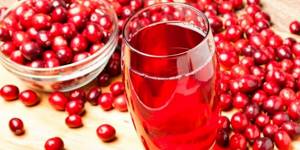
Sugar-free products
This product is said to be "white death". However, sugar is sucrose, which is converted in the body into glucose and fructose, and humans need them as sources of energy. If you want to lose weight, then you should eat foods that do not contain fast carbohydrates :
- meat;
- seafood;
- fish;
- all types of cereals
If you feel unwell after reducing your carbohydrate intake, you can eat a little whole grain or rye bread for breakfast or lunch. When you really want something sweet, you can replace sugar with the following products that will delight you with their taste:
- marshmallows;
- oriental sweets;
- black chocolate;
- paste;
- marmalade
Combination rules
Products that do not contain sugar, but have a protein composition, are processed by the body in an acidic environment, and foods rich in carbohydrates are processed in an alkaline environment. Compliance with this principle allows you to correctly combine products with each other. For example, it is better not to eat fish with cereals, cereals or potatoes, which are rich in starch, which requires an alkaline environment for processing.
Meat should not be eaten with nuts - it causes heartburn.
Meat dishes containing carcinogenic substances are best consumed with foods that are saturated with chlorophyll, which can break down harmful compounds:
- sorrel;
- spinach;
- salads;
- parsley;
- dill;
- basil;
- cilantro;
- cabbage;
- avocado.
A simultaneous snack of banana and cottage cheese is not harmful to the body, although it is better not to combine protein foods with fruits rich in glucose. Stomach juice quickly breaks down bananas, so you can eat them with nuts, dairy products, cheese, herbs and seeds.
Nutritionists do not recommend consuming 2 protein products at once, since the body uses different types of gastric juice to process them.
Legume products, for example, peas and beans, can be combined with vegetable oil or sour cream. At the same time, they are also useful with vegetables, since they contain starch. Mushrooms should not be eaten with starchy potatoes.
It is better to use them with the following products:
- greenery;
- cheese;
- porridge;
- bread;
- nuts;
- legumes;
- seafood.
Cereals containing phytium compounds prevent the body from absorbing iron, so they should not be consumed with meat dishes rich in this element.
Cereals are combined with seafood, mushrooms, seaweed, herbs, and dried fruits. Porridges are eaten with vegetables prepared in any way, including baking, stewing, and pickling. Fresh fruits containing simple sugars are not suitable for consumption with cereals, which are processed slowly by the stomach.
Making mistakes when choosing food products, people do not pay attention to the composition indicated on the packaging. For example, it is better to choose regular cottage cheese instead of curd mass containing sucrose. Ryazhenka, katyk, kefir and yogurt are very healthy and do not contain sugar. It is important to balance your diet to ensure that your body receives nutrients every day.
The most valuable and healthy sugar substitute is honey. Its various types, containing large quantities of enzymes, are capable of breaking down under the influence of temperatures. You should not add honey to hot tea or heat it alone or with other foods, as it will not benefit the body.
All beneficial substances from honey disappear after heating and a harmful carcinogen is released. Honey must be natural, otherwise it can harm the body. The chemical composition of honey is identical to blood serum. This ensures easy absorption of the product by the human body.
Urgent glucose in urine - glucose in urine at 38 weeks of pregnancy
Good afternoon to all pregnant women, on September 27 I took a urine test and as a result, glucose in my urine was 5.5 m/mol, I went and retested for a fee, today I got the result, it was even higher than 12.9. I don’t know what to do, my head is already spinning, I’m already upset to tears. I read about glucose in the urine, everything leads to the fact that this is diabetes mellitus, during the entire pregnancy I have never had anything like this, go to the doctor on 10/04/10. Maybe someone knows something or has anyone had this. Pregnancy 36 weeks
Discussion
Thank you all very much for your support and advice, but in any case, see the doctor on Monday and from there we’ll decide what to do next
it's called hormone-induced gestational diabetes. In the US, everyone is tested for it at 28 weeks. If there are indications (like my prediabetes), they check earlier. I was checked at 11 weeks - yes, of course. I inject insulin and continue to take metformin. Since you are already at such a late stage, they will no longer inject you with anything... You will give birth soon.

